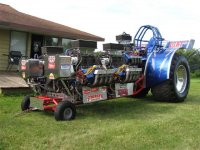For those who use Steahly FlyWheel weights. Do they really work? I have always wanted to try them but, I was always to hesitant to buy. I have always wanted to know if I would get the same effect buy running a heavier back tire with my heavier SideWinder Sprockets? Or those SuperSprox Sprocket because even those are heavier than the aluminum Renthal 's.
You are using an out of date browser. It may not display this or other websites correctly.
You should upgrade or use an alternative browser.
You should upgrade or use an alternative browser.
FlyWheel Inertia or Fly Wheel Effect
- Thread starter hondacr500af
- Start date
That won't do the same thing at all
Last edited:
Just go with 20 mil graffix. But, make sure they're Sikk 20 mil. 
A heavier flywheel will make a big dif

A heavier flywheel will make a big dif

It's usually done by trail riders. The added flywheel mass does two things. First is doesn't allow the rpms to build as quickly. This mellows it out a bit with no negative effect on power. It also allows the engine to run smoothly at a lower rpm.
It's usually done by trail riders and to make the power a bit more tractable. Not usually a positive effect for the track.
Your 500 already has a pretty massive flywheel when compared to the smaller bore smoker.
It's usually done by trail riders and to make the power a bit more tractable. Not usually a positive effect for the track.
Your 500 already has a pretty massive flywheel when compared to the smaller bore smoker.
Last edited:
I'm sorry but, I find that hard to believe and understand. The crank and the back wheel act as a spinning mass that being forced to spin. Some riders can feel the effect of a heavier tire. Some will say the bike is more stable with a heavier tire.That won't do the same thing at all
I'm sorry but, I find that hard to believe and understand. The crank and the back wheel act as a spinning mass that being forced to spin. Some riders can feel the effect of a heavier tire. Some will say the bike is more stable with a heavier tire.
It doesn't do the same thing, at all. .. Weight on the flywheel is weight that will help the clutch. If you put the weight on the tire or sprockets., its not going to help the engine get going, and just going to cause exactly what you are trying to fix.
Not sure if that makes sense.
Got it.It doesn't do the same thing, at all. .. Weight on the flywheel is weight that will help the clutch. If you put the weight on the tire or sprockets., its not going to help the engine get going, and just going to cause exactly what you are trying to fix.
Not sure if that makes sense.


